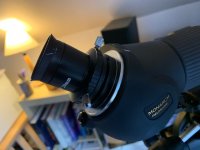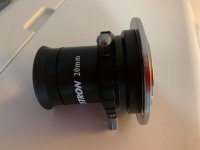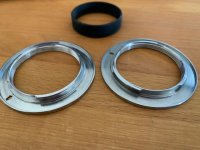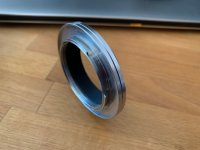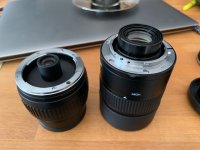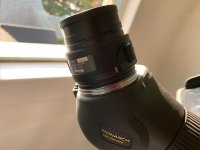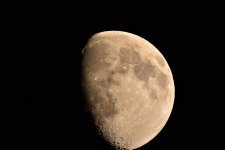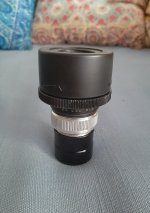This is Phil,
I am a new member. Like you guys I have a Monarch ED82. I'm rather happy with it.
I guess the only disappointing aspect IMO is that, with the Nikon lenses, one cannot go beyond a 60X magnification. This is a strong limiting factor (that is one of the main reason for this thread I guess).
Thus, I am wondering which eyepieces would allow me to go beyond this level of magnification?
Henry mentioned the Baader Mark IV Hyperion Zoom. So I wonder which magnification can be achieved with this lens?
Racuuna also mentioned the possibility of using APM HDC 13mm and 5mm lenses with the monarch (post #131).
I am wondering which magnification can roughly be achieved with a 5mm APM? In term of magnification, it should go well beyond the actual Nikon lenses?!
Also, which attachment rig can be use with the APM ? Would the 'monarch astro-rig' (i.e. Baader Ultrashort T-2 / 1.25" eyepiece clamp+Baader T-2/T-2 Inverter ring T2-26 1508025+ short Nikon T-adapter) that has been suggested earlier work with the APM HDC 5mm?
If not, which adapter can be used?
Now, I can also report two small modest results using the 'Monarch astro-rig' (for a lack of a better word). I was able to get focus very easily with a Celestron 20 mm (see pictures attached) but also with a Celestron 12 mm omni plossl. These are probably basic minors lenses but I wanted to mention them just in case someone is interested.
Thanks for your time.
Sincerely,
Phil
PS: apology if some of the questions appear naive.
I am a new member. Like you guys I have a Monarch ED82. I'm rather happy with it.
I guess the only disappointing aspect IMO is that, with the Nikon lenses, one cannot go beyond a 60X magnification. This is a strong limiting factor (that is one of the main reason for this thread I guess).
Thus, I am wondering which eyepieces would allow me to go beyond this level of magnification?
Henry mentioned the Baader Mark IV Hyperion Zoom. So I wonder which magnification can be achieved with this lens?
Racuuna also mentioned the possibility of using APM HDC 13mm and 5mm lenses with the monarch (post #131).
I am wondering which magnification can roughly be achieved with a 5mm APM? In term of magnification, it should go well beyond the actual Nikon lenses?!
Also, which attachment rig can be use with the APM ? Would the 'monarch astro-rig' (i.e. Baader Ultrashort T-2 / 1.25" eyepiece clamp+Baader T-2/T-2 Inverter ring T2-26 1508025+ short Nikon T-adapter) that has been suggested earlier work with the APM HDC 5mm?
If not, which adapter can be used?
Now, I can also report two small modest results using the 'Monarch astro-rig' (for a lack of a better word). I was able to get focus very easily with a Celestron 20 mm (see pictures attached) but also with a Celestron 12 mm omni plossl. These are probably basic minors lenses but I wanted to mention them just in case someone is interested.
Thanks for your time.
Sincerely,
Phil
PS: apology if some of the questions appear naive.





